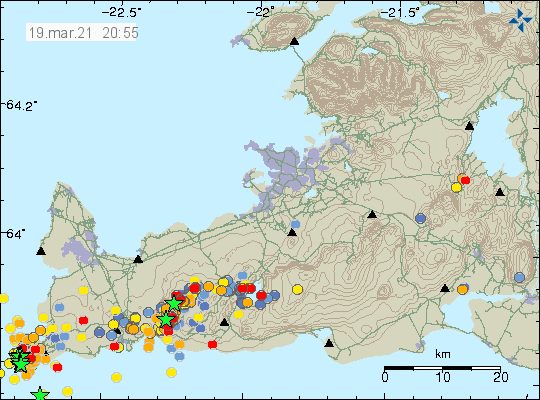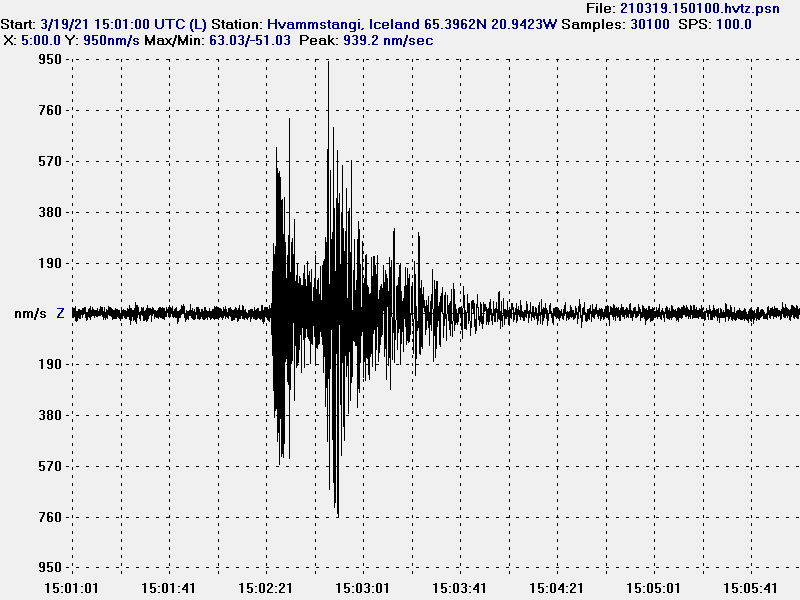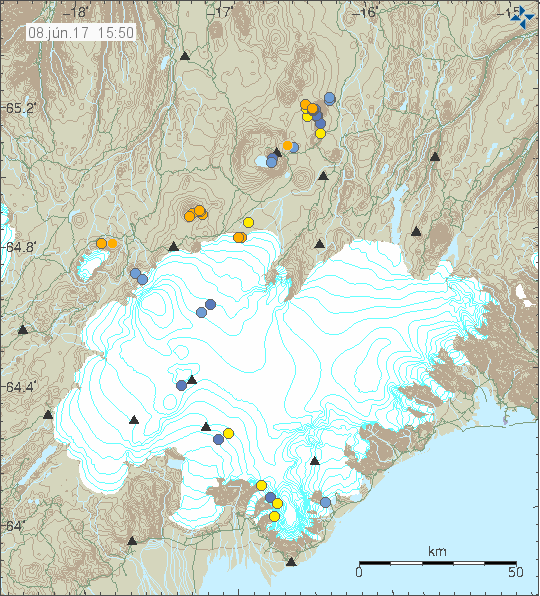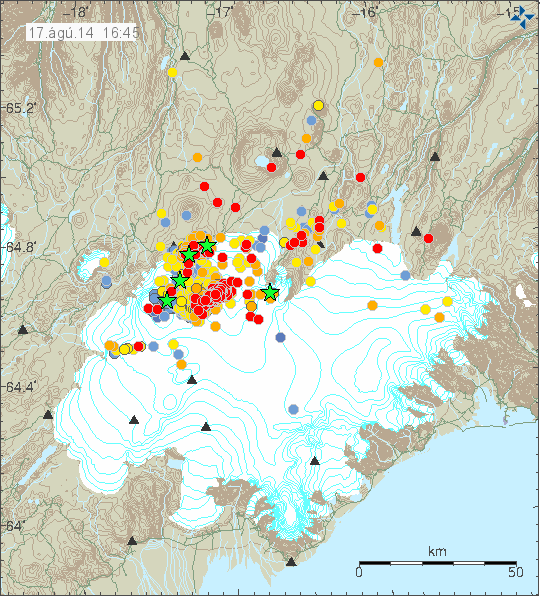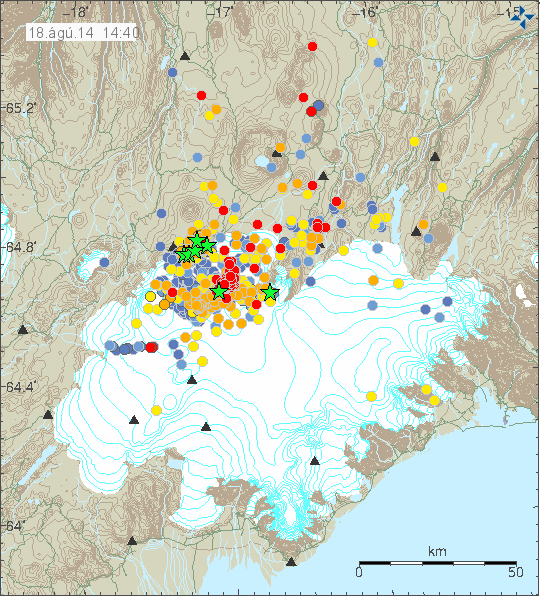This is a short overview of the eruption that is now ongoing in Geldingadalur in Fagradalsfjall mountain area. This is part of Krýsuvík-Trölladyngja volcano system according to latest information. This information might change as the time and more information is collected. This article is written on 20-March-2021 at 02:58 UTC.
- This is the first eruption in Krýsuvík-Trölladyngja volcano system since the year 1340.
- The eruption started at 20:45 UTC according to Icelandic Met Office. The harmonic tremor from the eruption is almost invisible.
- The fissure is at the writing of this article estimated about to be 1 km long with the direction south-west and north-east.
- Currently the eruption is small and there is no risk of damage to any infrastructure. Next road (currently closed because of earthquake damage) that might get damaged is 2,5 km distance from the eruption site.
- This eruption suggests that more eruption might start in different fissures once this eruption is over.
- The valley that the lava is flowing into might get filled with lava if the eruption lasts long enough. The valley next to it is equally deep so there is no danger of this lava flow.
- The eruption is in a area that is difficult to access even by a car.

The eruption might only last for two to three days as it currently looks but that might change without warning since it is impossible to know for sure what is going to happen next with this eruption.
There are no good web cameras of this eruption since it is remote and started late on Friday night and the weather on Reykjanes peninsula is not good for today (20-March) or tomorrow (21-March).
Updated at 04:49 UTC. Web cameras added to this article.
Rúv – Beint vefstreymi af eldgosinu – Vogastapi
Beint vefstreymi frá eldstöðvunum – Rúv.is – New! This web camera is closest to the eruption.
Road camera 1
Live from Iceland – Keilir
Live from Iceland – Reykjanes
Article updated at 03:49 UTC. Information added. Spell check fixes.
Article updated at 04:52 UTC. Web cameras added.
Article updated at 14:44 UTC. New web camera added from Rúv.

